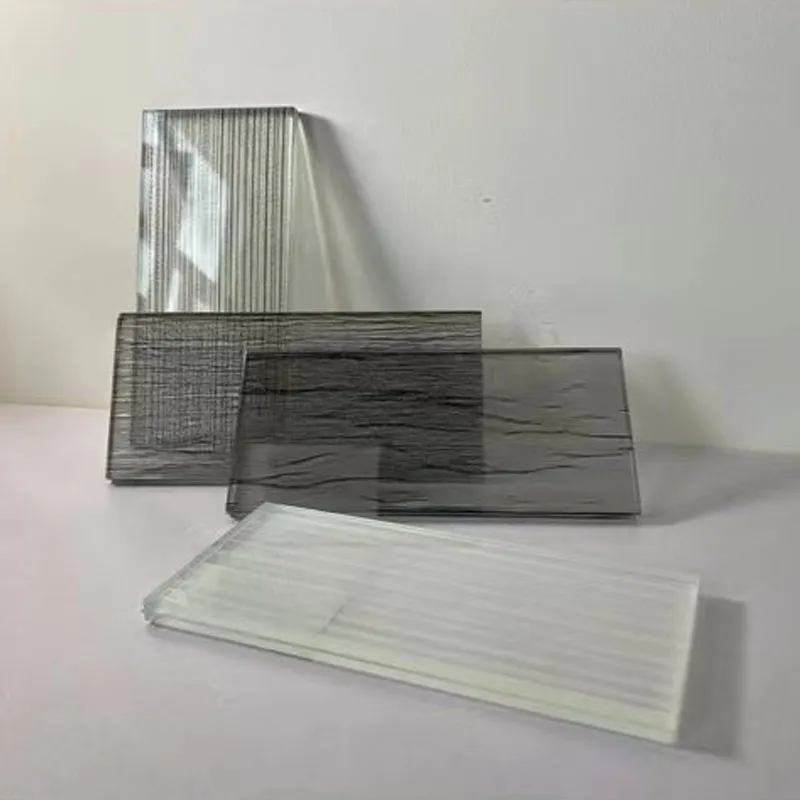Architectural glass plays a vital role in modern construction, providing not only structural integrity but also aesthetic appeal and functionality. The versatility of glass has led to the development of various types, each tailored to meet specific architectural and design needs. In this article, we will explore some of the most common types of architectural glass and their applications.
One of the most widely used types is float glass, known for its clarity and smooth surface. Manufactured by floating molten glass on top of molten tin, it is ideal for windows and facades due to its excellent optical quality. Float glass is often used in both residential and commercial buildings, providing unobstructed views while ensuring energy efficiency when treated with low-emissivity coatings.
Another important type is laminated glass. This glass consists of two or more layers bonded together with an interlayer, usually made of polyvinyl butyral (PVB). This construction not only enhances safety—preventing shattering and potential injury—but also improves sound insulation. Laminated glass is commonly used in skylights, glass floors, and balustrades, where both safety and aesthetic considerations are paramount.
Tempered glass is another significant type known for its strength and thermal resistance. It undergoes a heating and cooling process that increases its durability, making it a preferred choice for shower doors, glass partitions, and exterior applications susceptible to temperature variations. When broken, tempered glass shatters into small, blunt pieces, minimizing the risk of injury.
architectural glass types
Insulated glass units (IGUs) consist of two or more panes separated by a spacer and sealed to create a thermal barrier. This configuration significantly improves energy efficiency by reducing heat transfer. IGUs are widely used in windows, doors, and curtain walls, helping to maintain comfortable indoor climates while reducing energy costs.
Smart glass, also known as switchable glass, is an innovative option that can change its properties in response to external stimuli, such as light or electricity. This technology allows for dynamic privacy and solar control, making it especially useful in commercial spaces, conference rooms, and residential applications where flexibility is desired.
In conclusion, the variety of architectural glass types offers architects and designers a multitude of options to explore. From the basic float glass to advanced smart glass solutions, each type serves specific needs, enhancing the overall design, functionality, and energy efficiency of buildings. As technology continues to evolve, the potential applications of architectural glass will only expand, offering exciting possibilities for the future of construction.
 Afrikaans
Afrikaans  Albanian
Albanian  Amharic
Amharic  Arabic
Arabic  Armenian
Armenian  Azerbaijani
Azerbaijani  Basque
Basque  Belarusian
Belarusian  Bengali
Bengali  Bosnian
Bosnian  Bulgarian
Bulgarian  Catalan
Catalan  Cebuano
Cebuano  Corsican
Corsican  Croatian
Croatian  Czech
Czech  Danish
Danish  Dutch
Dutch  English
English  Esperanto
Esperanto  Estonian
Estonian  Finnish
Finnish  French
French  Frisian
Frisian  Galician
Galician  Georgian
Georgian  German
German  Greek
Greek  Gujarati
Gujarati  Haitian Creole
Haitian Creole  hausa
hausa  hawaiian
hawaiian  Hebrew
Hebrew  Hindi
Hindi  Miao
Miao  Hungarian
Hungarian  Icelandic
Icelandic  igbo
igbo  Indonesian
Indonesian  irish
irish  Italian
Italian  Japanese
Japanese  Javanese
Javanese  Kannada
Kannada  kazakh
kazakh  Khmer
Khmer  Rwandese
Rwandese  Korean
Korean  Kurdish
Kurdish  Kyrgyz
Kyrgyz  Lao
Lao  Latin
Latin  Latvian
Latvian  Lithuanian
Lithuanian  Luxembourgish
Luxembourgish  Macedonian
Macedonian  Malgashi
Malgashi  Malay
Malay  Malayalam
Malayalam  Maltese
Maltese  Maori
Maori  Marathi
Marathi  Mongolian
Mongolian  Myanmar
Myanmar  Nepali
Nepali  Norwegian
Norwegian  Norwegian
Norwegian  Occitan
Occitan  Pashto
Pashto  Persian
Persian  Polish
Polish  Portuguese
Portuguese  Punjabi
Punjabi  Romanian
Romanian  Russian
Russian  Samoan
Samoan  Scottish Gaelic
Scottish Gaelic  Serbian
Serbian  Sesotho
Sesotho  Shona
Shona  Sindhi
Sindhi  Sinhala
Sinhala  Slovak
Slovak  Slovenian
Slovenian  Somali
Somali  Spanish
Spanish  Sundanese
Sundanese  Swahili
Swahili  Swedish
Swedish  Tagalog
Tagalog  Tajik
Tajik  Tamil
Tamil  Tatar
Tatar  Telugu
Telugu  Thai
Thai  Turkish
Turkish  Turkmen
Turkmen  Ukrainian
Ukrainian  Urdu
Urdu  Uighur
Uighur  Uzbek
Uzbek  Vietnamese
Vietnamese  Welsh
Welsh  Bantu
Bantu  Yiddish
Yiddish  Yoruba
Yoruba  Zulu
Zulu 

